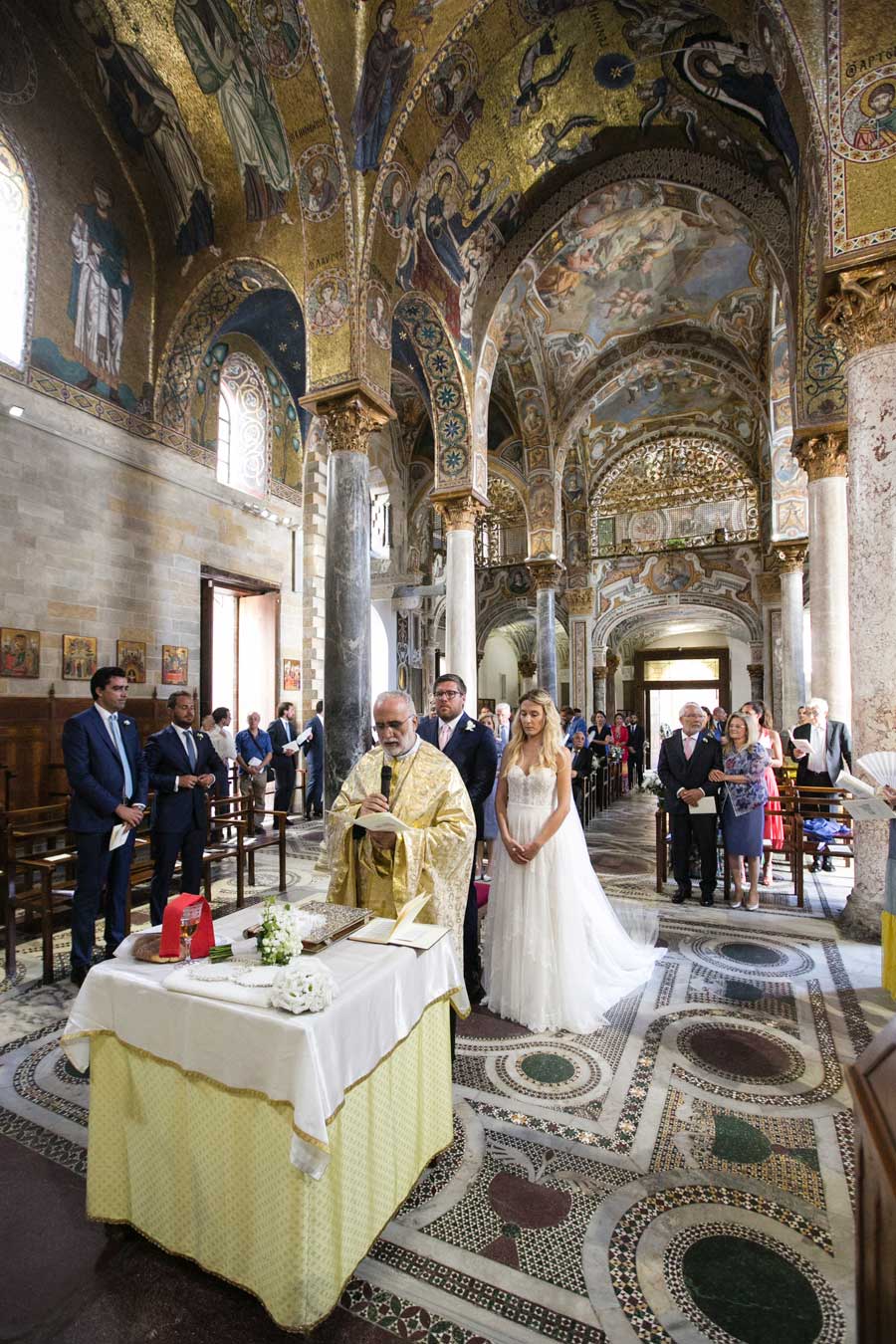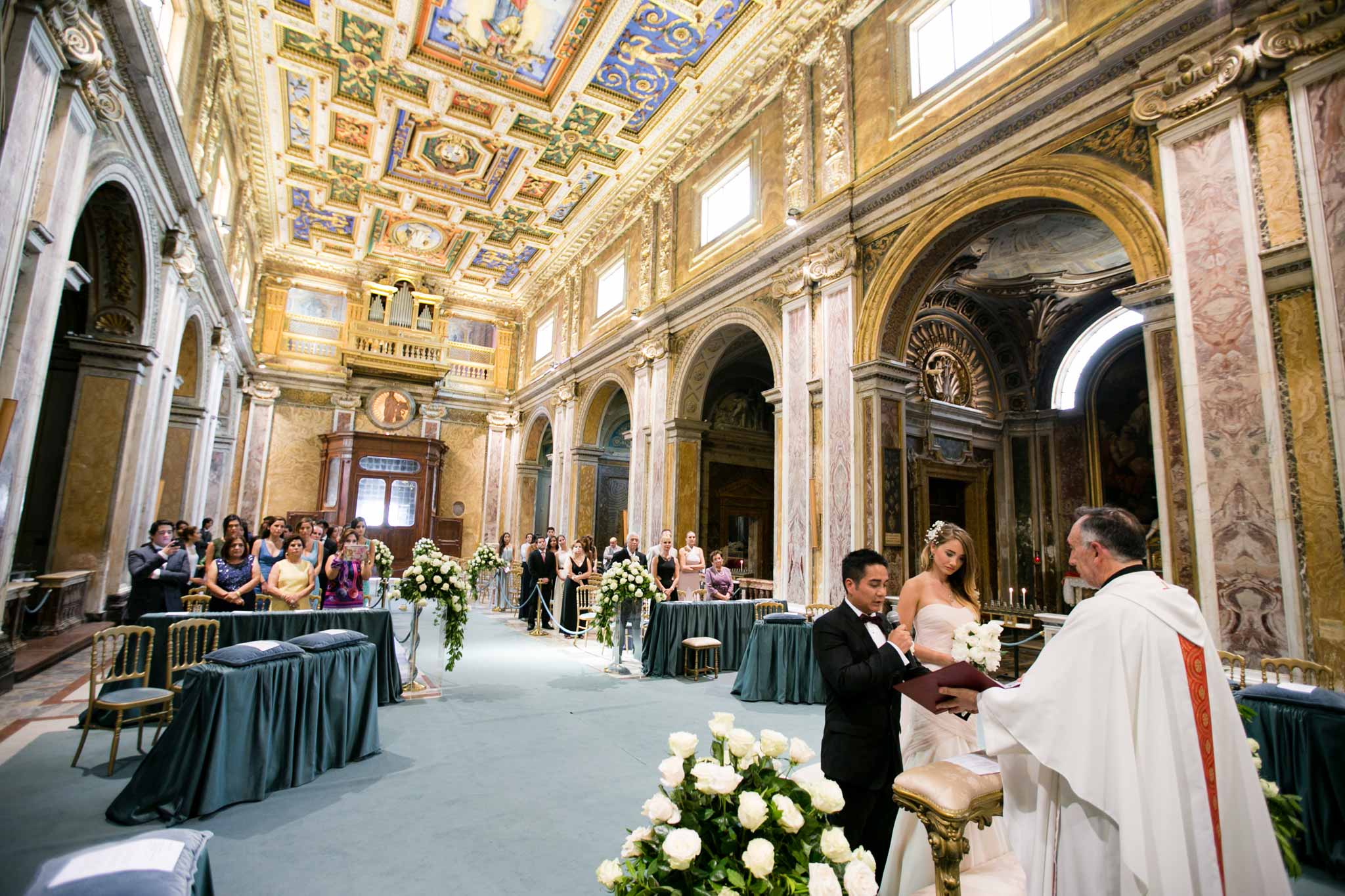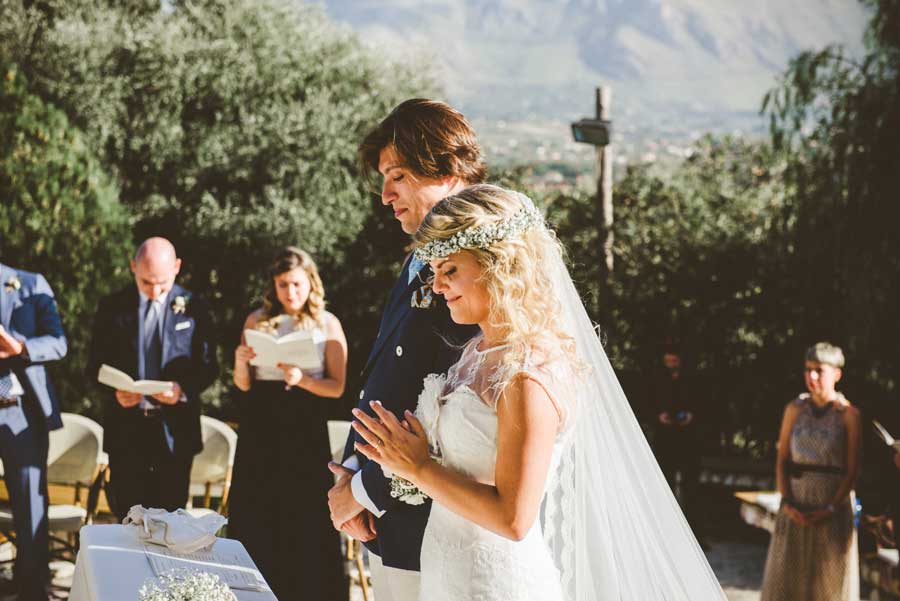Step 1: Choose the parish
which is not the church where the marriage will be celebrated!
This may be the bride’s or the groom’s parish; alternatively, the couple may opt for the parish in their place of residence as newlyweds. Even if they marry elsewhere, all church procedures and paperwork will be managed by the priest of one of these parishes.
To ascertain that no barriers exist to a valid, licit and fruitful marriage and verify that both the bride and the groom are free to marry, and that no other impediment set out by canon law exists, the parish priest will:
- collect and verify civil and religious documents required from the couple (see step 2);
- verify the bride’s and groom’s freedom of consent;
- verify the nature, ends and essential properties of their marriage;
- manage the publication of banns and their communication to the town hall and any other churches;
- request from the local Ordinary to dispense the couple from impediment and/or provide them with a license to marriage as set out by canon law.
Step 2: Documents and certificates
Please note that all documents except for Baptism, First Communion and Confirmation certificates expire 6 months after they have been issued.
- Baptism and First Communion: provided by the parish where the baptism/first communion were celebrated. They contain the person’s name, surname, place and date of birth, and report the place and date of baptism/communion. Sometimes, the baptism certificate also includes confirmation.
- Confirmation: provided by the parish where the confirmation was held. This may be unnecessary if, in the parish register, confirmation is included within the certificate of baptism
- Certificate of freedom to marry: must be presented by who, after turning 16, has lived for 1 year or longer outside the Diocese where the marriage will be held. It consists of a declaration before two witnesses from the parish of residence and endorsed by the curia.
- Spouse’s death certificate: for widows and widowers.
- Proof of pre-marriage course attendance: classes are held in the parish offices and involve a set of meetings in which the couple’s main ethical, religious and psychological issues are dealt with. No final exams: pre-marriage classes end with the priest’s positive judgement, i.e. his letter of consent to the wedding.
- Nulla Osta (no impediment) notice: the relevant embassy in Italy or corresponding authority in the country of origin will provide these documents, which will need to be translated into Italian and legalized.
Step 3 – The publication of banns
If you are not an Italian resident, you are exempted from the publication of banns; however, two days before your wedding you will still need to declare you are getting married at the Town Hall, with the help of an interpreter.
Step 4
Once all documents are submitted to the parish, the parish Bishop will sign the permission to tie the knot outside your local parish and will send it to the Diocese in Italy.
The priest in Italy will then collect the final documents, validate them and start the procedure to confer the marriage legal validity. Now, the only thing left to do is celebrate!




